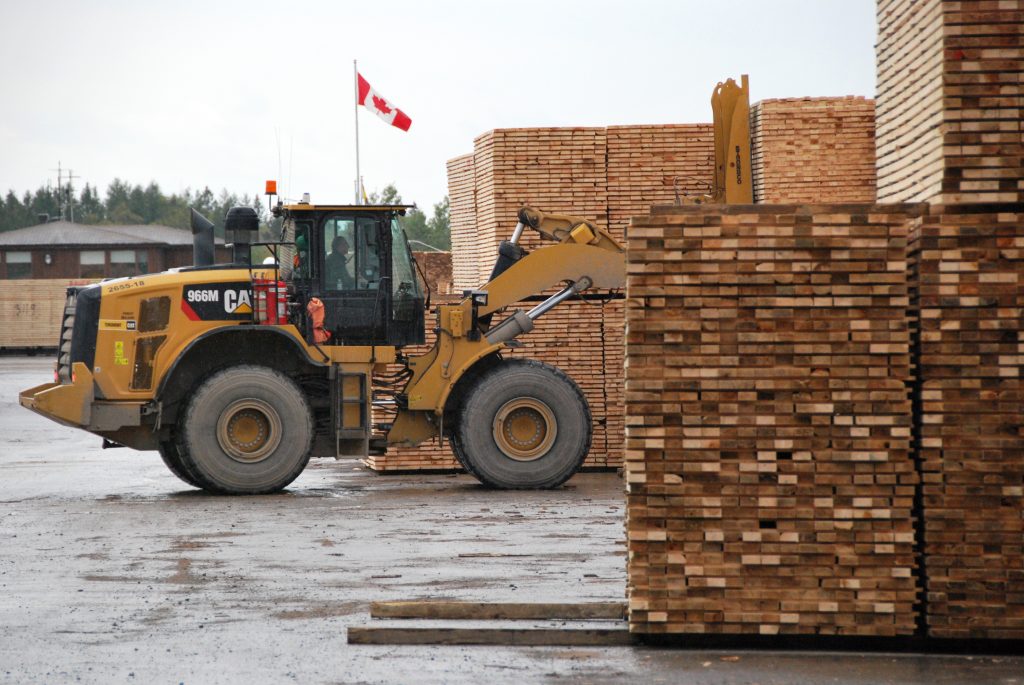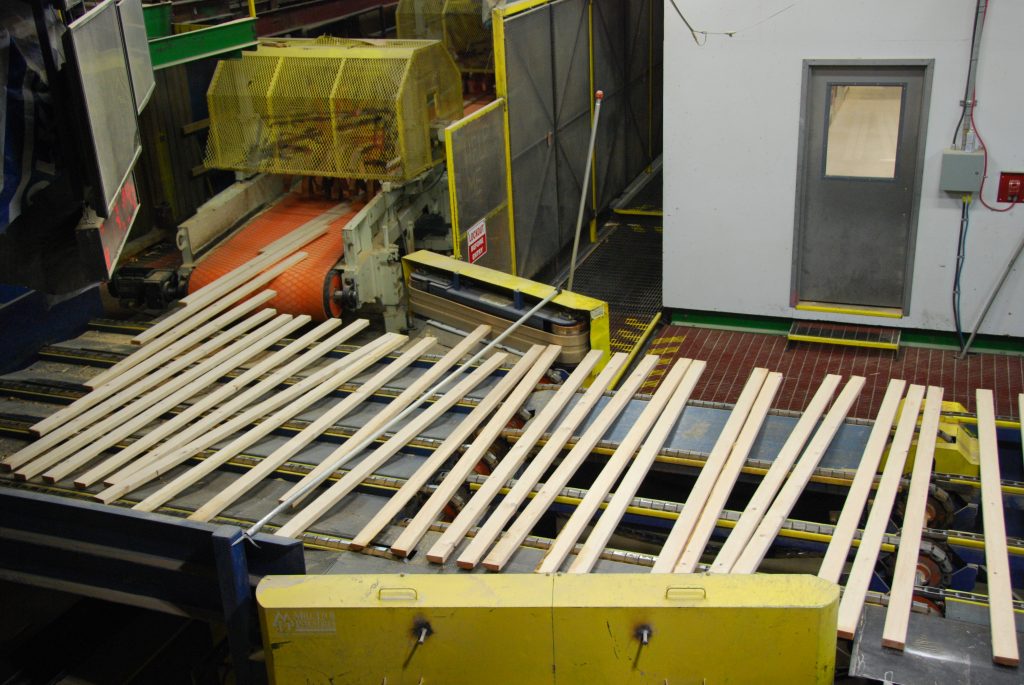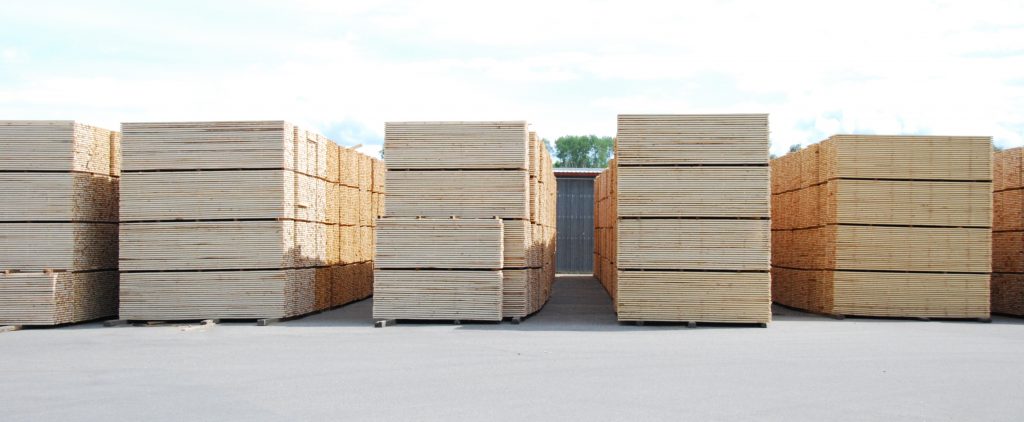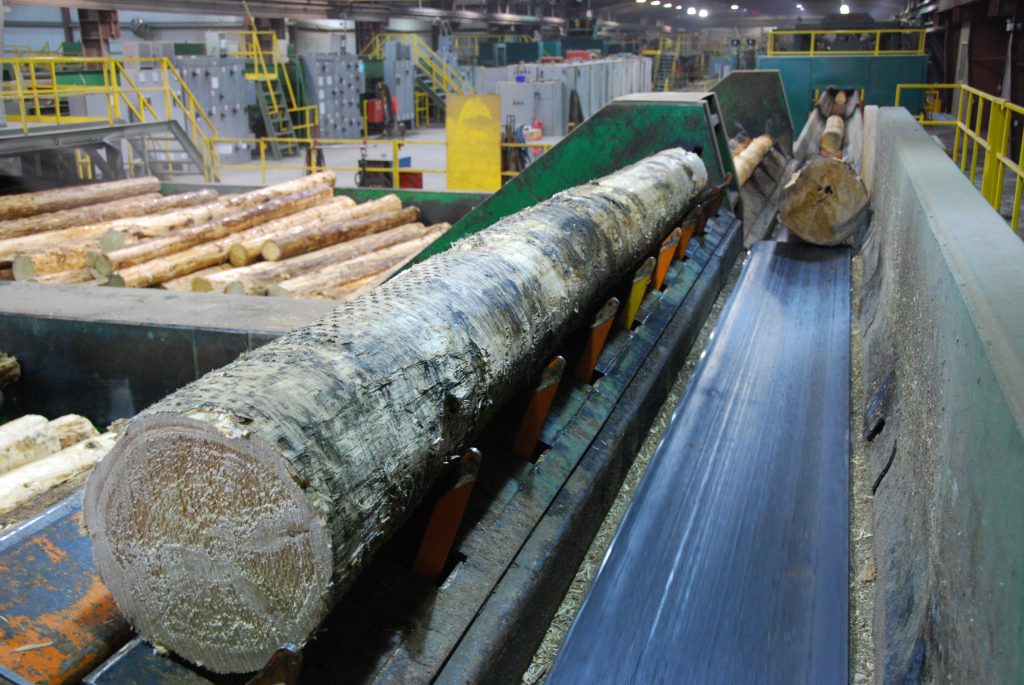
Features
Sawmilling
2020 global lumber markets outlook
FEA-Canada's Russ Taylor expects competitiveness will continue to be a key theme in the coming year.
January 6, 2020 By Russ Taylor
 Photo: Annex Business Media
Photo: Annex Business Media In North America at least, 2019 will be remembered as the hangover from the 2018 first-half price spike that collapsed, leaving many casualties along the way. Various Wood Markets Monthly issues in 2019 highlighted the sawmill devastation in British Columbia, the dismal global softwood lumber consumption trends in 2018 and 2019, and the emergence of a new low-cost timber supply in central Europe that is quickly changing global markets. All these themes have one thing in common: gaining competitiveness in volatile markets where low-cost suppliers set the market and high-cost producers get wiped out quickly.
In reviewing the just-completed 2019 FEA Global Timber/Sawmill/Lumber Cost Benchmarking Report (covering 2018 annual and 2019 Q2 lumber costs and margins in 29 countries and regions), it is evident that the supply base is changing – and it’s all about competitiveness. More specifically, the 2019 report shows how delivered log costs can make or break a region. For example, in just two years, from being one of the lowest-cost suppliers in North America, the B.C. Interior has now moved into position as the highest-cost one; conversely, central European mills are close to being the lowest-cost suppliers to North America, a trend that will continue to play out in 2020.
Global lumber trends
World lumber markets peaked in mid-2018 and it has been downhill ever since, with many in the industry wondering how things could have changed so quickly given what appears to be questionable upside ahead for 2020. The simple answer is that global economies and wood products demand all slowed – and relatively quickly – creating an oversupplied market with weak commodity prices.
Prices for U.S. structural lumber in 2019 were relatively low – low prices were required to curtail the high-cost capacity in order to get rid of the excess lumber supplies that were present all year. Through this it was learned that the higher-cost mills were located in western North America (mainly in the B.C. Interior); this was a stunning result caused by an out-of-control government stumpage formula that does not tie log prices to lumber prices.
The good news is that the FEA 2020 lumber price forecast calls for an increase of about 10 per cent over 2019 levels, but that may not be enough for some high-cost regions to remain operational for the entire year, but at least it will be better.
All global markets, including the U.S., Canada, most of Europe, Japan, China and much of Asia, were oversupplied throughout 2019, and it will take considerable growth in demand to absorb this incremental capacity in 2020. However, with 3+ billion bf of sawmill capacity cuts in North America in 2019 with over 2+ billion bf in B.C. alone, the supply chain may not be robust enough to handle demand surges. Therefore, price volatility in the first quarter of 2020, or shortly thereafter, may creep into the U.S. market.

There are always various change factors at work that can lead, either directly or indirectly, to unpredictable swings in lumber supply, demand and/or prices; this was precisely what happened in 2019 (on the down side), just as it had in 2018 (on the up side). In 2020 some of the same factors will be in place, so expect surprises during the year.
Global lumber demand
Many in the industry will not remember 2019 positively. Simply put, most global markets were awash in wood, and all major producing regions searched valiantly – but with limited success – for outlets to move their product. Consequently, most major importing countries have been sitting on above-average lumber inventories for much of the year, with the net result being low prices and red ink for producers, importers and exporters. One question frequently gets asked of us: “Why were the industry and market results so bad in 2019 and was there any way to predict this?”
Many reasons have been offered up about the soft markets in 2019 in the U.S., China and other key regions. However, we present one scenario here that broadly assesses global softwood lumber consumption trends over the years to see if some obvious results start to show up. (Spoiler alert: they do!)
As background, Europe (excluding Russia) and North America (excluding Mexico) each accounted for 29 per cent of global softwood lumber consumption in 2018. China represented 19 per cent, so three countries – the U.S., Canada and China – plus Europe represented over 75 per cent of total global consumption. The next top five consuming countries are relatively small: Japan (4.2%) and Russia (2.8%), followed by various plantation-pine countries Brazil, Chile and Australia, with a total of 4.7 per cent, and Mexico.
Another way of looking at global consumption is by continent. Adding in Mexico, North America represented 30 per cent of total global demand, followed by Europe at 29 per cent and Asia at 26 per cent. These three continents consumed 86 per cent of global softwood lumber in 2018.

In reviewing the total global softwood lumber consumption trends in 2018, it recorded a gain of just 1.0 per cent versus 2017, representing a huge slowdown (both 2016 and 2017 had growth rates of 3.7-3.8%). Things got worse in 2019, with global consumption expected to end up close to 0.3 per cent. The historical annual change in the rate of global consumption is about 2.2 per cent (20-year average, adjusting for a milder recession than the 2008-09 blowout), so anything below this level indicates a sub-par market. And, with two years (2018 and 2019) at 1.0 per cent or lower annual growth, the poor results should have been expected; this has clearly been proved out.
Since Europe, the U.S. and China represent 71 per cent of global softwood lumber consumption; if two or more regions do not exceed a level of about 3 per cent, it is possible a third country could drag the average growth below the 2.2 per cent threshold. The slowdown in 2018 was driven by a surprising falloff in the U.S. where softwood lumber consumption for the year declined by 1.4 percent; a similar rate is expected for 2019 following the wettest year on record. Europe recorded negative consumption growth in 2018 (-0.1%), but a small gain of 0.8% is forecast for 2019. The gains in China – over 5 per cent growth in both 2018 and 2019 – were not even close to helping offset these poor consumption growth rates in the U.S., Europe, and the rest of the world.
In 2020, most major softwood lumber consuming regions are likely to record gains, with the U.S. and China likely to lead all major countries (again) with increases of about 4 per cent each.
Canada should enjoy moderate growth, but Europe and Japan are projected to record small demand declines due to their softer economies and slower housing markets. Global softwood demand in 2020 is forecast to show an increase of around 2.2-2.5 per cent as compared to 2019. The outlook for 2021 calls for a more optimistic expansion, with global demand expanding by up to 2.7 per cent.
European beetle and wind-damaged timber
A new wildcard in the global supply of lumber, as well as log exports, is the rapid expansion of the spruce bark beetle in Europe that has grown to a massive scale in just a few short years. The net impact involves a huge timber salvage program that is having far-reaching implications in global markets. Exceptionally hot and dry summers have fanned the flames, so to speak, for an unprecedented outbreak of spruce bark beetle activity throughout central European forests, killing vast swathes of timber. Drought, brought on by what most believe to be climate change, has weakened mature trees’ natural defense mechanisms, giving beetles a wide-open field to multiply unchecked. The resulting massive infestation has forced landowners to quickly harvest their attacked forests across the Bavarian region of Germany, as well as in the Czech Republic, northern Austria, Slovakia, Poland and many other countries.
The crisis is not just being caused by beetle attacks, however, but also from windstorms that are (with increasing frequency) knocking down huge tracts of forests. Rotting wind-thrown timber can become an optimal breeding ground for beetles, supplementing the food sources already available.
FEA’s estimate of the spruce beetle-killed timber and wind-damaged forest land is 113 million m3 in 2018, led by wind-damaged timber at 55 per cent (with the remainder beetle-killed wood). In 2017, some 20 per cent of the central European harvest was made up of damaged timber, and in 2018 this increased to ~42 per cent. For 2019, the total timber harvest of damaged timber will move even higher, with the beetle-killed component expected to be 50 per cent larger than in 2018.
Exacerbating this dramatic scenario is the European spruce log export story to China – now the “elephant in the room.” Up until the end of October 2019, European log exports to the Chinese market were a whopping 5.6 million m3 – the pace for the last two months was 1+ million m3 per month. The volume for 2019 is expected to higher than the volume of log exports from North America in 2018, with about one-third lower volumes for North America in 2019 due to the surging volumes of competitively priced European logs.

Global lumber supply
In reviewing 2018, where Europe is grouped as “one region,” the five largest producers are Europe, the U.S., Canada, Russia and China – together, they represented 86 per cent of global production. The other producing regions are relatively small and include Japan (2.4%) and four plantation-pine countries (7.2%).
When grouped by continent, four regions account for 90 per cent of global production: Europe, North America, Asia and Russia.
Total global softwood lumber production trends in 2019 mirrored the pace of consumption growth – up 1.0 per cent versus 2018. Russian and the CIS region recorded production gains of 7 per cent in 2019, while Europe achieved an increase of about 2 per cent. However, most other regions (the U.S., Canada, Japan) all recorded small losses due to slower demand.
For 2020, global production is forecast to grow by 1.6 per cent.
An increase in U.S. production could have an influence on worldwide output next year – especially as a result of new capacity installations in the U.S. South – but our forecast calls for a modest gain of 1.5 per cent in 2020, then an increase to 2 per cent in 2021.
Canada’s production will continue to be impacted by U.S. import duties, as well as timber supply reductions and mill closures in B.C., so output is anticipated to rise modestly by less than 1 per cent in each of 2020 and 2021.
Supply increases in Central Europe due to the spruce bark beetle salvage program will lead to some small hikes in output, but a lack of skilled labour will limit mills’ ability to add shifts. As a result, no significant change is expected in 2020 to European lumber production, while a gain of 1.5 per cent is projected for 2021. Smaller gains are likely in other regions, with only Japan (possibly) recording a small negative result.
Global lumber exports
Statistically, Europe is the largest lumber-exporting region, although only a third of its exports are shipped outside Europe: the bulk goes to other neighbouring European countries. With Europe grouped as one region, the top three exporting regions – Europe, Russia and Canada – represented 88 per cent of global exports in 2018. Following this are Belarus (2.6%), the U.S. (2.2%) and the plantation-pine countries of Chile, Brazil and New Zealand (collectively, 5.7%).
Global lumber imports
Global imports are also dominated by Europe, but again this includes mainly imported lumber from neighbouring European countries. With Europe grouped as one region, the top three importers – Europe (32%), China (21%) and the U.S. (21%) – represented 73 per cent of global softwood lumber imports. The next top six importers are two Asian countries (Japan, 5.0%; and South Korea, 1.5%) and three MENA countries (Egypt, 3.3%; Algeria, 1.8%; and Saudi Arabia, 1.3%), in addition to Uzbekistan (1.8%) and Mexico (1.2%).
Summary and outlook
Up until the middle of 2019, the full impact of the timber catastrophe in Europe was not well known, with most initial information suggesting that the accelerated beetle harvest could a couple of years before dying out. However, newer reports reveal that the problem could be substantially worse with a much longer duration before the timber salvage is completed. Having experienced the mountain pine beetle epidemic in the B.C. Interior, FEA-Canada has seen firsthand the impact of beetle damage on pine forests, and it is our view that the European spruce beetle could have an even greater net impact. The main question: what world region will be susceptible to the next climate change-induced beetle or insect outbreak?
No matter what, global trade will continue to see waves of change, brought on not just by market forces, but also by climate change.
In reviewing the lumber market trends in 2019, we note constrained global consumption growth of about 0.3 per cent (or below the longer-term average of 2.2%), and therefore a global industry slowdown that has most markets experiencing slower demand, too much supply and weak lumber prices. The market has been complicated in 2019 by several disruptions:
- The U.S.-China tariff war
- The U.S.-Canada lumber war (continuing import duties of 20.23%)
- Other geopolitics (including Brexit)
- Central European storm and beetle log salvage that is causing large increases in lumber production and log exports
- China’s government environmental protection program that is resulting in hundreds of older factories being closed
- Low U.S. lumber prices, causing huge curtailments in the now high-cost region of B.C.
The global outlook for 2020 looks to be more promising: we expect the U.S. market to lead the charge with a consumption gain of up to 5.0 per cent, with China almost matching this level. This should result in global lumber consumption of around 2.0-2.5 per cent in 2020. This would be slightly above the long-term average of 2.2 per cent, and therefore an indicator of improved global production and exports, in tandem with improved lumber prices during at least some point in the year.
One of the requirements for a healthy market in 2020 and 2021 will be the health of export markets in Asia (including China and Japan), the Middle East and North Africa. For enough excess production to be absorbed – in enough volumes to tighten the global supply base and enable lumber prices to rise – developments in all these markets will be critically important.
This article is extracted from various issues of WOOD MARKETS Monthly International Report and the China Bulletin; further summaries can be found at: www.getfea.com/publication.
Russ Taylor is the Managing Director for FEA-Canada based in Vancouver, BC. International WOOD MARKETS Group was purchased by Forest Economic Advisors LLC in August 2017 and now operates as FEA-Canada.
Print this page